- Top St. Petersburg Things to Do
- Our favorite things to do on our cruise excursions
- Admire architecture
- Cruise the rivers and canals
- Ride the St. Petersburg Metro System
- Walk along Nevsky Prospekt
- See the splendor of the churches
- Church of Our Saviour on Spilled Blood
- St. Isaac’s Cathedral
- Kazan Cathedral (The Cathedral of Our Lady of Kazan)
- Visit Catherine Palace
- Stroll Mikhailovsky Garden
- Watch traditional performances of song and dance
- More sites to visit and things to do in St. Petersburg
- PIN this post for later!
- Related posts:
Top St. Petersburg Things to Do
Eagerly anticipating the early morning arrival of our ship in St. Petersburg, Russia, I awoke to the first glimmer of light through the windows of our stateroom on the Viking Jupiter. I had been interested in visiting Russia for a long time, so I was excited that St. Petersburg, the country’s second largest city, was on our Viking Homelands cruise itinerary.
Since its founding in 1703 by Peter the Great, the city has seen many changes due to revolutions and other historic events, some that also brought about changes to its name — from St. Petersburg in 1709 to Petrograd in 1914 to Leningrad in 1924 and back to St. Petersburg with the end of the Soviet era in 1991. Today, it is a vibrant cosmopolitan European city. Of course, with just two days to explore, we didn’t see everything, but we got a great introduction to the city’s highlights.
Our favorite things to do on our cruise excursions
From the first morning, Mr. TWS and I kept very busy taking advantage of every opportunity to see the sights. That meant needing to clear Russian Immigration (located in the cruise terminal adjacent to where are ship was docked) several times. Although Mr. TWS found it simply a tedious process, I actually found it kind of exciting.
Our Viking shore excursions (included and optional), led by expert locals, introduced us to Russian cultural traditions, historic landmarks, architectural gems, a first-class Metro system, and more. These are the highlights of our experiences with additional recommendations for visitors.
Admire architecture
When visiting St. Petersburg, you’ll find many examples of eye-catching architecture beyond the stark concrete commercial and residential buildings of the Soviet era still visible outside the city center. Along the river embankments, we admired many colorful neoclassical and baroque buildings mostly from the 18th and 19th centuries. We learned that many buildings are often painted in yellow or white to brighten the gray days of winter.
There are also many stately mansions and villas of the wealthy residents of the past such as the Stroganov family. Their palace is one of the oldest of the city’s aristocratic residences (shown below).
Cruise the rivers and canals
St. Petersburg is nicknamed the “Venice of the North” for its rivers (the Fontanka, Moyka, and Neva), canals, and decorative bridges crossing them. In the summer, visitors can actually float on Venetian-style gondolas on the city’s canals.
Although quite a brisk day, we opted to take the outside seats on the tourist boat to get the best views. The “St. Petersburg Canals, St. Isaac’s & Church of Our Saviour on Spilled Blood” excursion was a great tour. We cruised past key sites and beautiful buildings passing under several bridges, including Anichkov Bridge (the oldest in the city shown above) on the Fontanka River.
As we cruised along the rivers and canals, our guide also pointed out many city highlights, including the Cruiser Aurora docked in the Neva River. The ship is famous for starting the October Revolution when it fired blank shells toward the Winter Palace.
Ride the St. Petersburg Metro System
I’d heard about the St. Petersburg Metro System and looked forward to going on the “St. Petersburg by Metro and on Foot” excursion. We rode the Metro from Avtovo Station (considered by many to be one of the most beautiful stations in the world) to Nevksy Prospekt Station with transfers in between.
St. Petersburg offers a very efficient system of 67 stations, many with artistic and symbolic decor. I loved the experience of riding with locals and getting a feel for life in modern St. Petersburg.
Walk along Nevsky Prospekt
Exiting the Nevsky Prospekt Metro station, we began a walking tour that was a part of our “St. Petersburg by Metro and on Foot” excursion.
Nevsky Prospekt is a busy commercial street with many shops, restaurants, and cafes. In addition to being home to Kazan Cathedral (mentioned above), there are many other points of interest on the street including the Singer Company (of sewing machine fame) building which houses St. Petersburg’s largest and most famous bookshop, Dom Knigi.
Along the way, we passed a pedestrian shopping zone (shown below) with a grand arch that is part of the General Staff Building of the Hermitage. Beyond the arch is Palace Square.
Our small walking tour group had a chance to spend a little time to shop for souvenirs or step inside a Russian cafe. Mr. TWS and I opted to go into a cafe pointed out by our guide. Through an unassuming door and down a few steps, we entered a cozy rustic cafe and decided to have a local beverage — a shot of Russian vodka. We think it was the right choice!
See the splendor of the churches
Our canal and river cruise excursion also included a visit to two stunning churches — the Church of the Saviour on Spilled Blood and St. Isaac’s Cathedral. Kazan Cathedral was toured during the walking tour described above.
Church of Our Saviour on Spilled Blood
Although I’d read of the beauty to be seen at the Church of Our Savior on Spilled Blood, I was unprepared by exactly how intense that beauty was. From the captivating exterior onion domes to the vibrant and intricate mosaics decorating the interior I was amazed. The church was constructed in medieval Russian style between 1883 and 1907 and got its name because it is built on the site where Tsar Alexander II was assassinated.
St. Isaac’s Cathedral
The gold dome of St. Isaac’s Cathedral, the fourth largest cathedral in the world, can be seen from many vantage points in St. Petersburg (as noted in other photos in this post). Inside, the gorgeous paintings and detailed decor of malachite and lapis lazuli kept us entranced as we walked from one area to the next and looked up to capture the beauty of the dome.
Kazan Cathedral (The Cathedral of Our Lady of Kazan)
On Nevsky Prospekt is the imposing Cathedral of Our Lady of Kazan. Kazan Cathedral, built in the early 19th century with the intent of being Russia’s main Orthodox church, it has with a garden and lovely fountain surrounded by the colonnades of Kazanskaya Square. The design of the cathedral was inspired by St. Peter’s Basilica in Rome.
In its history, the cathedral has been closed for periods of time — after the war of 1812 and the defeat of Napoleon and in 1929 by the Bolsheviks. Subsequently, it became the Museum of the History of Religion and Atheism, but regular services have been resumed in recent years.
Visit Catherine Palace
Mr. TWS, who affectionately refers to me as “The Queen”, likes to tell people that we visited my palace in St. Petersburg. But, of course, Catherine Palace was really home to the famous Russian empress, Catherine the Great.
There’s much to admire at Catherine Palace such as the baroque architecture, ornate interior, palace gardens (1,400 acres of grounds with a lake at the center), and the Hermitage Pavilion where Catherine the Great dined with guests. Beginning with a walk up the Great Staircase, we toured the staterooms on the first floor and were dazzled by the opulence of the decor and furnishing, especially in the Great Hall which is lined with mirrors and gleaming chandeliers (shown below).
I also liked taking the “Catherine Palace and Gardens” excursion because it gave us a chance to see a bit of the Russian countryside beyond the city of St. Petersburg during the coach ride to Tsarskoye Selo (Tsar’s Village) where the palace is located.
Stroll Mikhailovsky Garden
I was surprised by the beautiful parks that we observed in the city. While visiting the Church of Our Savior on Spilled Blood with our tour group, we had a bit of time to enter Mikhailovsky Garden via a walkway behind the church. It was a lovely place for a stroll and there were a few vendors selling snacks and drinks. I imagine that in spring and summer, it is a particularly wonderful place for a respite from city life.
Watch traditional performances of song and dance
St. Petersburg is a cultural capital and renowned for its famous musicians, dancers, and writers. The heritage of traditional folk music and dances is key to the culture and passed down through the generations. We enjoyed “Russia in Fairytales” performed at Youth House on Vasilyevsky Island (the performance venue varies) during the “Russia’s Native Songs and Dances” shore excursion.
More sites to visit and things to do in St. Petersburg
There are several important palaces, museums, and landmarks that can be visited on any number of the Viking cruise shore excursions. Viking Cruises had several excursion options to include these sites, but we couldn’t do everything.
- The Hermitage and Winter Palace (main building of the Hermitage Museum) — the official residence of Russian Emperors from 1732 to 1917 now with extensive galleries of European art treasures of 13th to 18th centuries
- Mikhailovskiy Palace — houses the Russian Museum’s major collections
- Peterhof Palace and Gardens — the “Russian Versailles”
- Yusupov Palace — the scene of Rasputin’s assassination
- Fabergé Museum — world’s second largest collection of Fabergé eggs
- St. Petersburg Ballet — in the city of Baryshnikov!
Russian visa tip: Because we were exclusively taking shore excursions led by Viking guides and would be staying with our groups at all times, we were covered by a group visa provided to Viking for cruise passengers. This was a big plus for us since procuring our own visas would have been costly and time-consuming. If you will be traveling independently or want to explore the city outside of the organized ship tours, you can get further information about getting a Russian visa through the U.S. Embassy and Consulates in Russia.
View tip: Our “St. Petersburg by Metro and on Foot” excursion ended at the Sofitel Hotel where champagne was being served at the rooftop bar. It was a lovely treat, but the best part was the great view over the rooftops of St. Petersburg that included St. Issac’s Cathedral.
Our time in St. Petersburg was one of the many highlights of our Viking cruise on the Baltic.
Thanks to Viking Cruises for our wonderful introduction to the intriguing city of St. Petersburg, Russia.

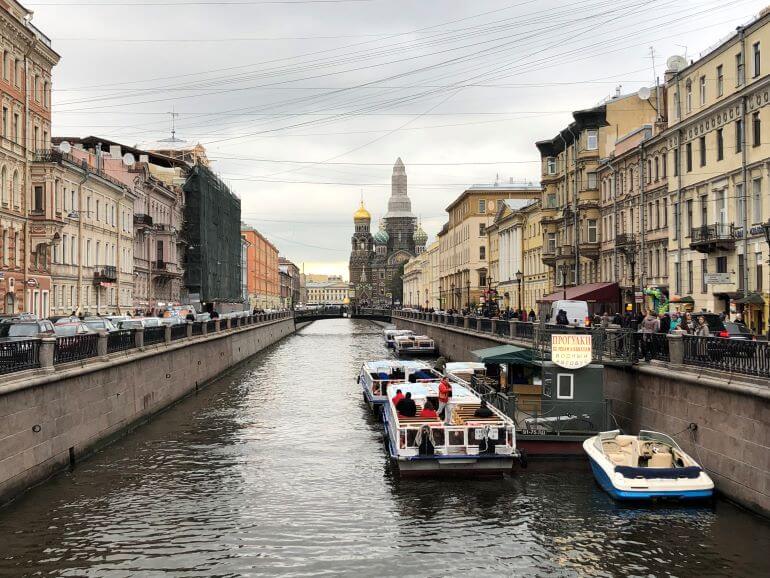
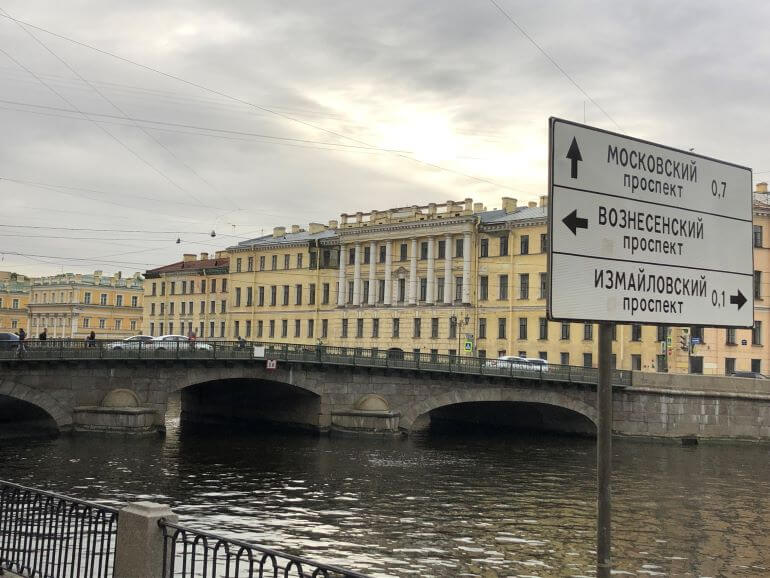
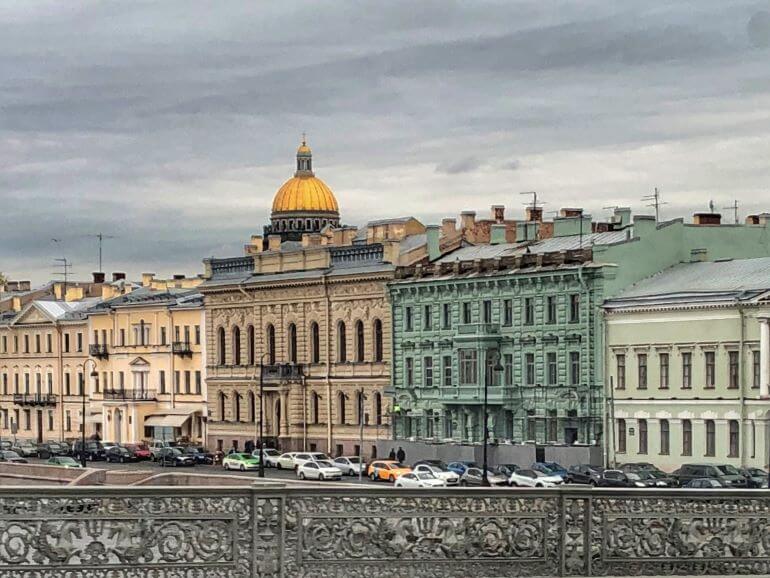
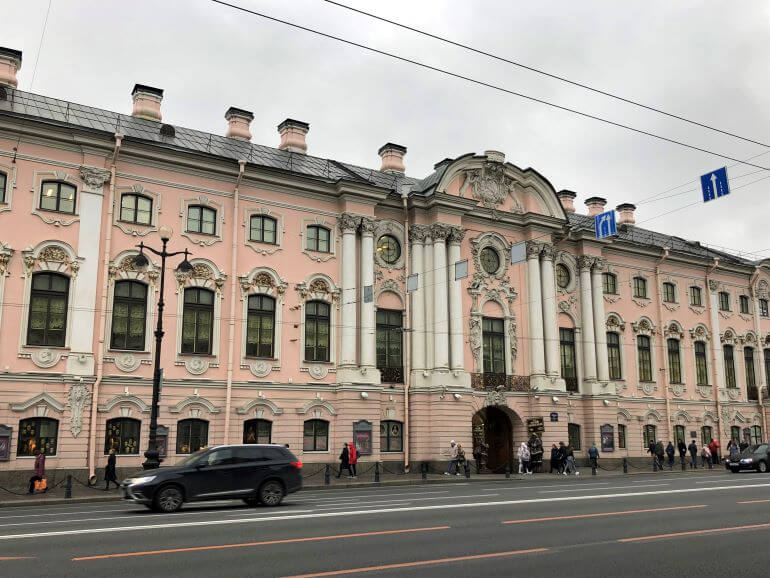
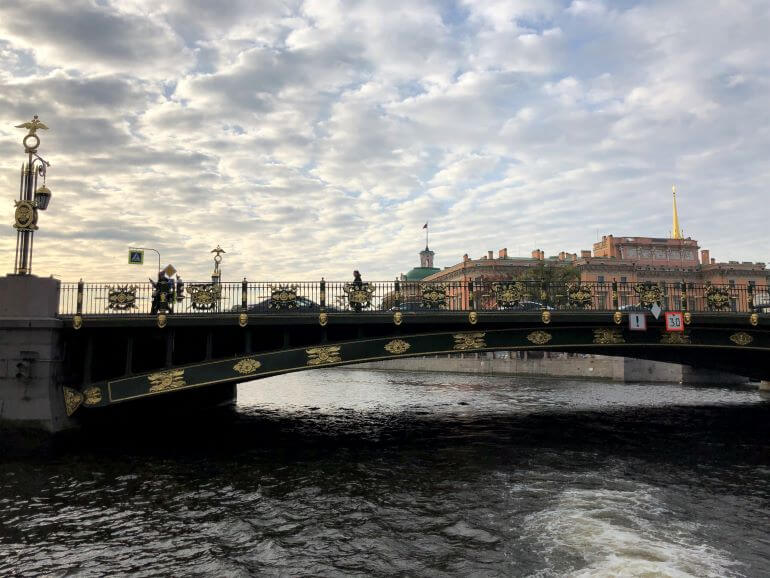
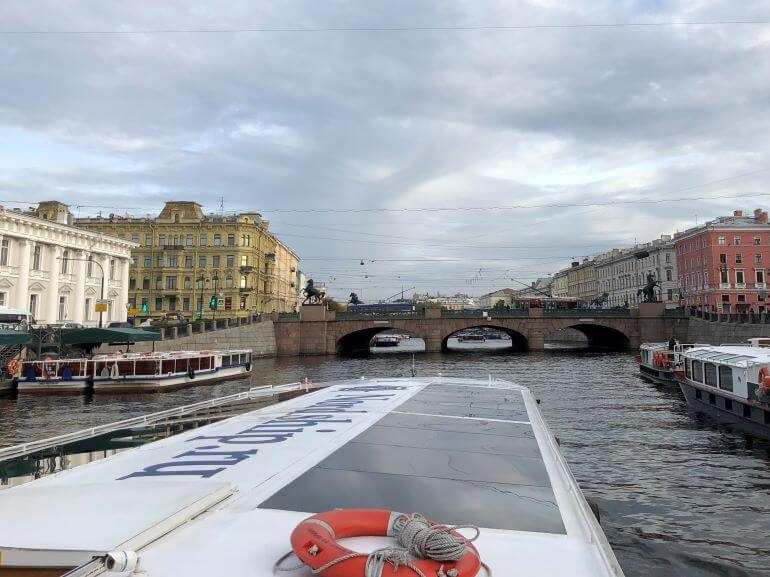
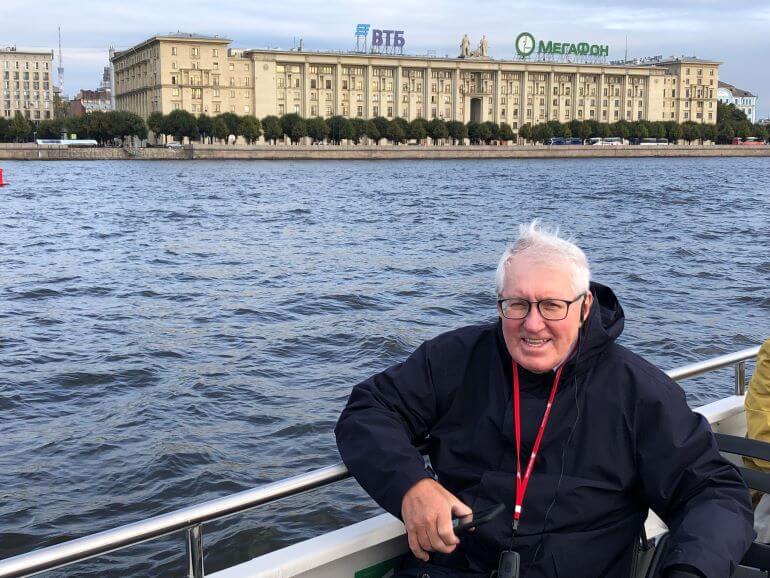
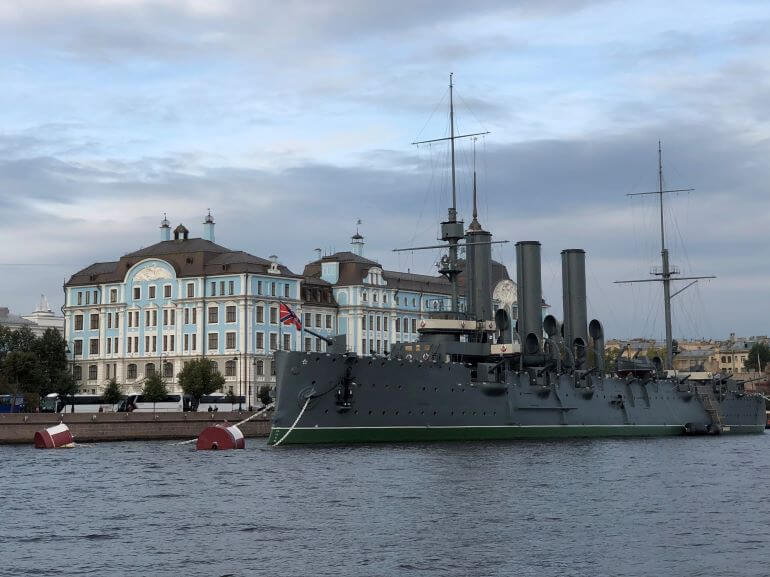

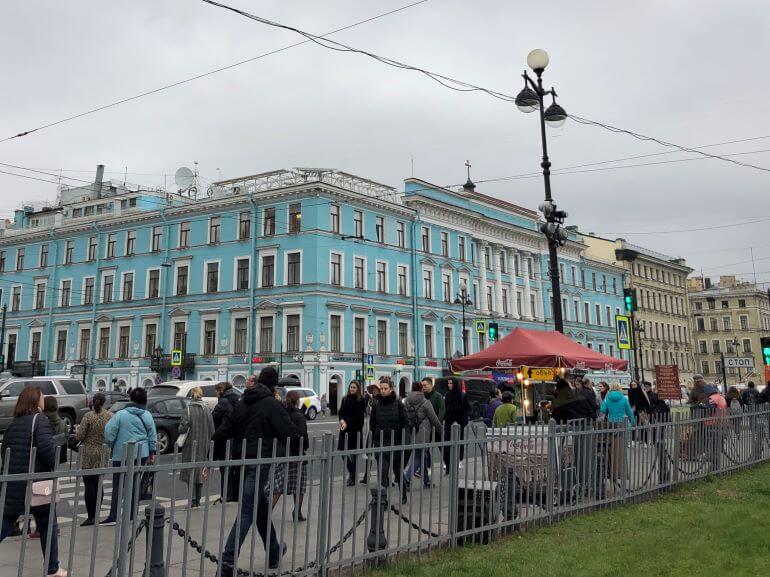
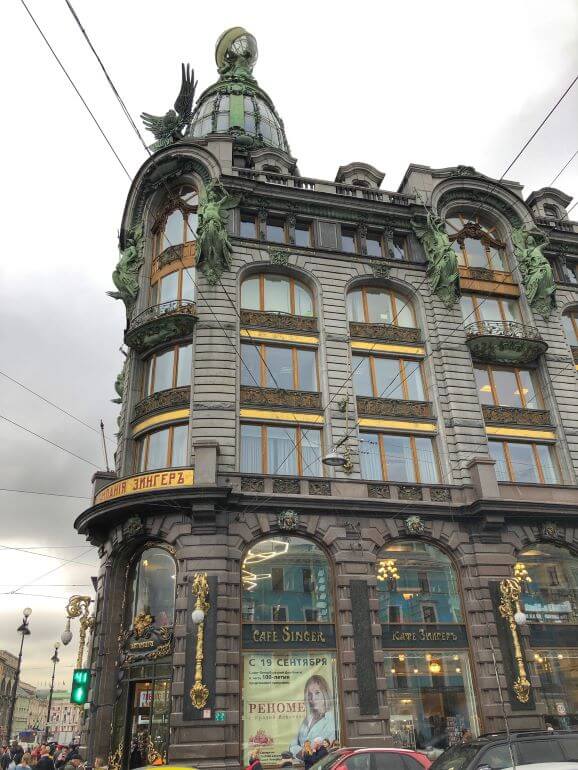
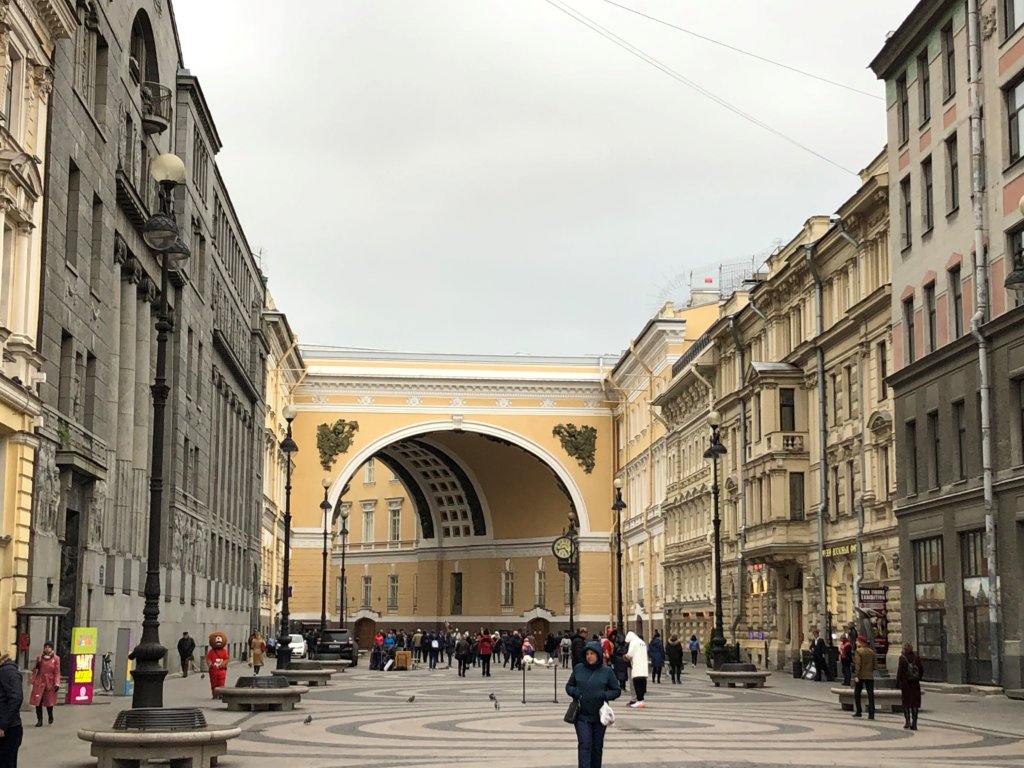
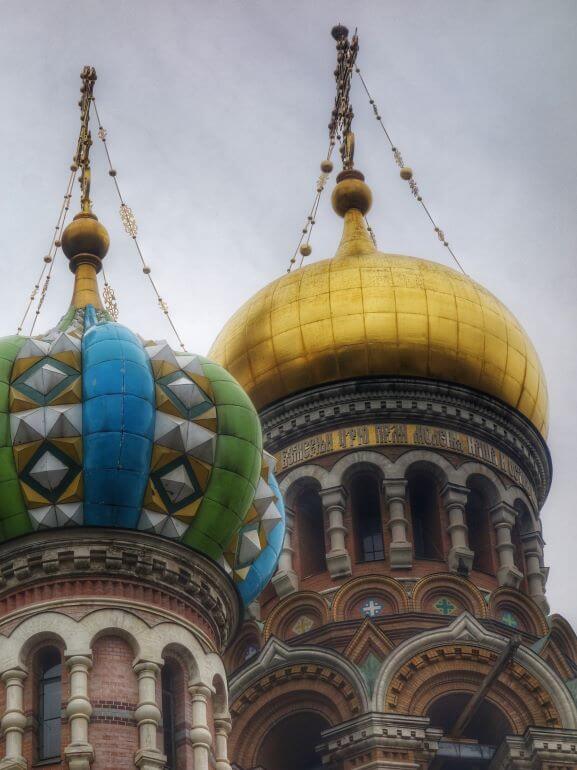
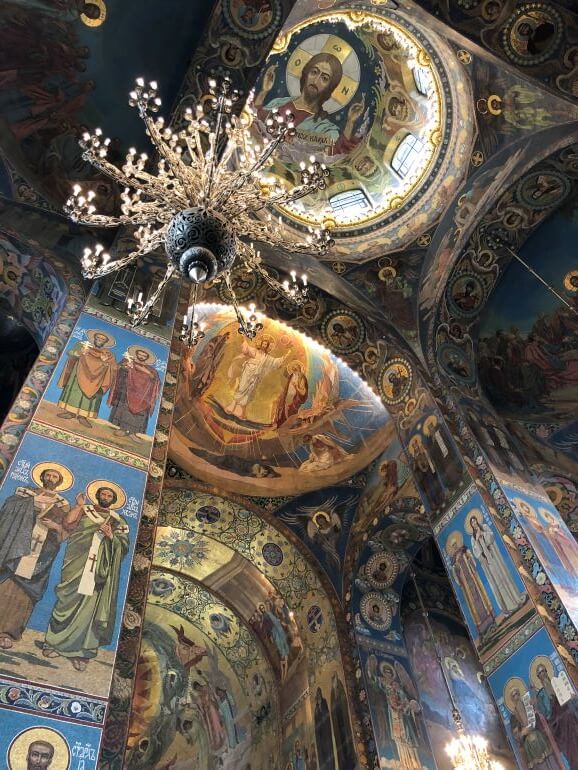
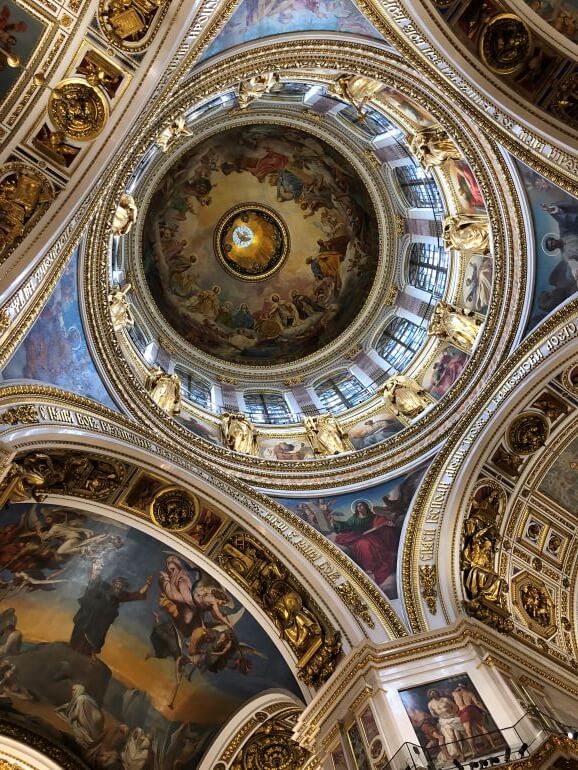
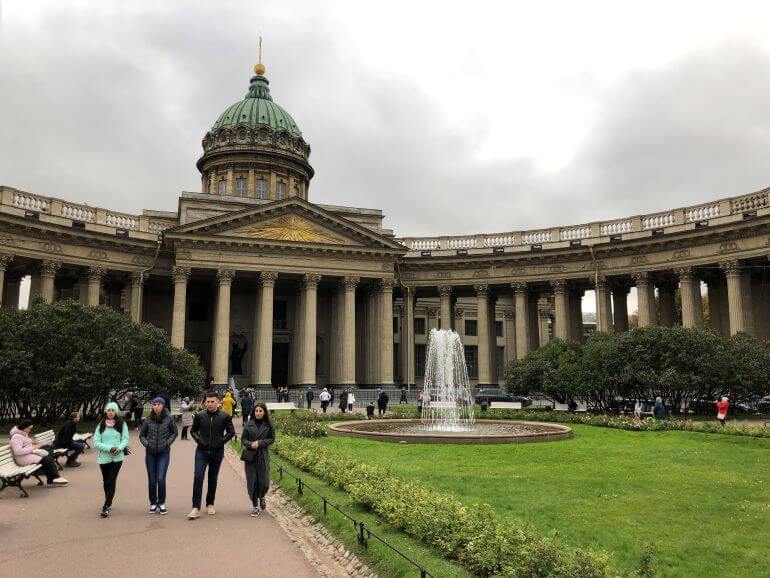
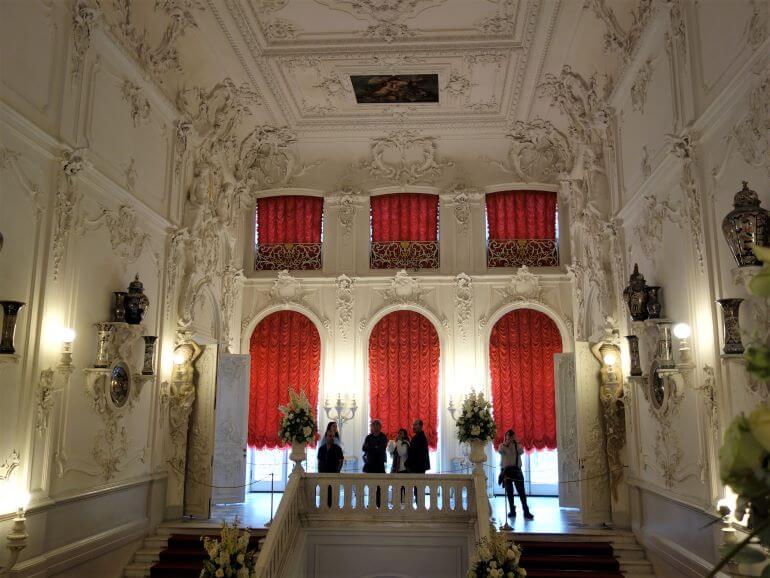
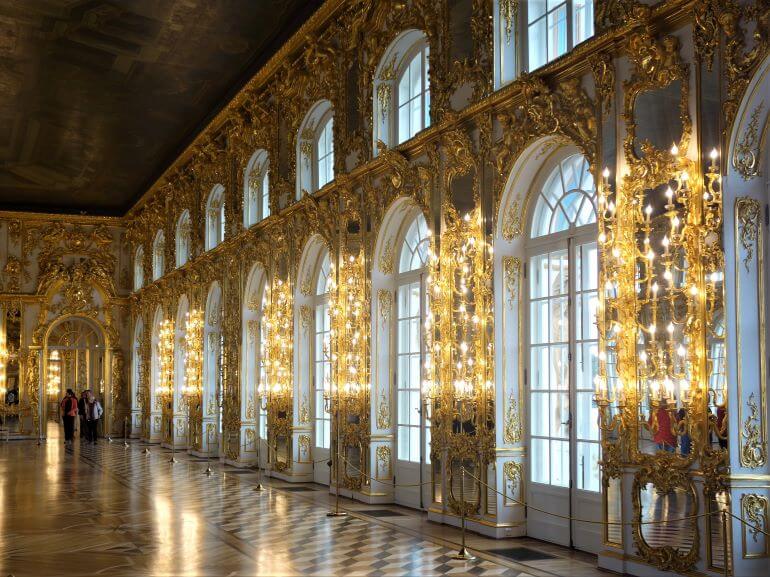
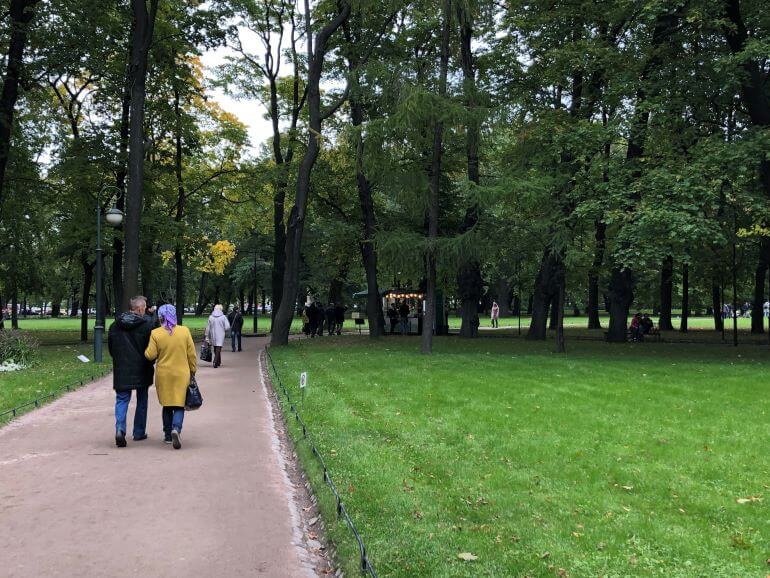

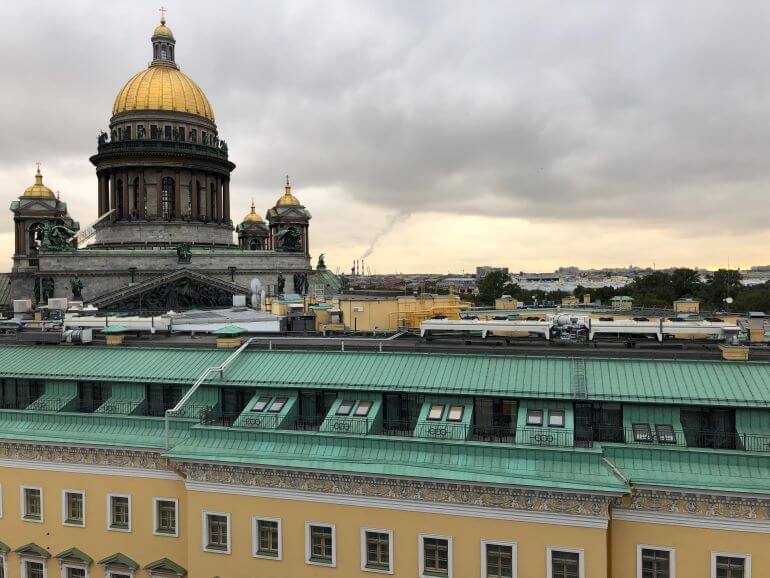
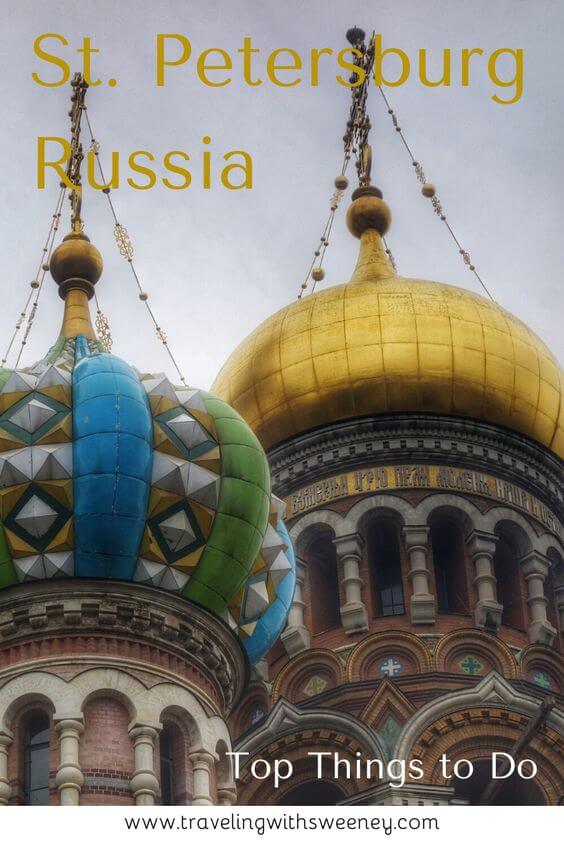
Russia for many years was never ‘on my list’ but since having read, A Gentleman in Moscow, I have to admit that I do have a bit of curiosity about the place and with posts like this, it has made it to ‘the list’!
Pingback: Giving Thanks in 16 Different Languages | Traveling with Sweeney
We only had a day in St. Peteresburg with a ferry from Helsinki. With a group visa, we were able to see the stunning architecture of the city including the Hermitage, the Church of the Spilled Blood, St. Nicholas Church, St. Isaac Cathedral, Wish we had time for Mikhailovsky Garden.
This Viking Homelands cruise has been on my radar. What a treat to read your post about it and view your informative images about the St. Petersburg portion!
Definitely a bucket list destination for me. Looks like St. Petersburg is an amazing place to visit.
St. Petersburg has been on my list for a while. I think Viking would be a great way to see the area. That architecture is outstanding!
I’ve had my eye on Russia’s Venice for quite a while. A Viking cruise would be a fantastic way to see St. Petersburg. The light given off by the windows of St. Isaac’s Cathedral is exquisite. I can see why you were looking up so much in the beautiful churches!
Pingback: Viking Cruise Shore Excursions: Should You Take Them? | Traveling with Sweeney
A trip to St. Petersburg is on our agenda for Sept provided we get off of house arrest and Russia is open again – Oh how a need this virus to be gone. Nice post and I’m looking forward to it even more now.
Can you tell me how much the optional excursions cost?